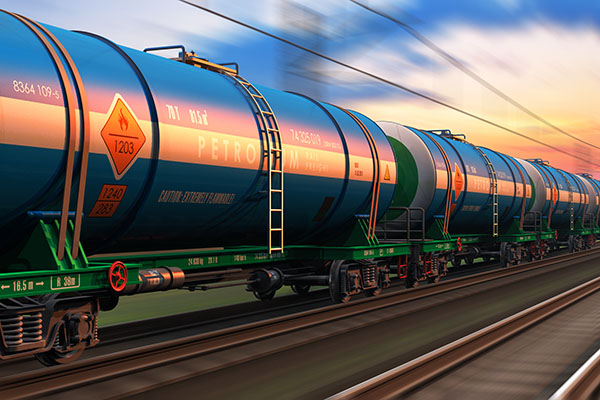Despite sluggish December, IANA reports 2018 intermodal volumes post annual gains
Total volume, at 18,931,323, posted a 5.6% annual increase. Domestic containers, at 7,928,304 were up 4.9% and trailers, at 1,444,571, headed up 10.6%.

Despite minimal or no growth in some key categories, intermodal volume for the month of December, while full-year 2018 saw annual growth across the board, according to data provided to LM by the Intermodal Association of North America (IANA).
Total December volume, at 1,534,241, was up 2.7% compared to December 2017. Domestic containers, at 612, 624, eked out a 0.5% annual gain, and trailers were off 5.5%, falling to 125,449. All domestic equipment, at 737,713, dropped 0.6% annually. International, or ISO, containers, increased 5.9% to 796,528.
2018 annual volume comparisons posted by IANA were better overall.
Total volume, at 18,931,323, posted a 5.6% annual increase. Domestic containers, at 7,928,304 were up 4.9% and trailers, at 1,444,571, headed up 10.6%. All domestic equipment, at 9,372,875, rose 5.7%. ISO containers, at 9,558,448, saw a 5.4% annual increase.
Even though December’s numbers were underwhelming compared to full-year 2018, IANA’s data continued to confirm how solid economic fundamentals, in tandem with steady demand, paced strong volume-growth in 2018.
As LM has reported, there have been various factors driving intermodal growth, including: tight capacity through much of 2018 in tandem with driver turnover and the ongoing lack of qualified drivers that lessened trucking production, according to industry stakeholders and was due, in part, to the December 2017 implementation of the Electronic Logging Devices (ELD) mandate for motor carriers.
IANA President and CEO Joni Casey told LM in 2018 that there were several reasons for the strong intermodal performance during the year, including: overall strong economy; continued import growth; higher fuel prices; tight OTR capacity; and weak comparisons to lower 2017 volumes in some markets.
Addressing the ongoing trailer growth, Casey described it as a “byproduct of heavy e-commerce demand, but it is also a factor of tighter over-the-road capacity,” adding “it remains to be seen if this is ‘the new normal.’”
On the ISO side, IANA explained that rising container import volume is the main reason for segment growth, adding that barring any sort of change to trade policy, that growth should remain intact in the short-term, paced by solid economic fundamentals.
But should large tariffs be applied to Chinese imports, IANA said it could have a “significant impact on ISO container volume,” which would be a cause for concern, as 47% of U.S. container volume originates in China.
Tony Hatch, president of New York-based ABH Consulting, explained that while the 2018 intermodal volume numbers were solid, it comes with the caveat of a missed opportunity at the same time.
“By growing at trend, it seems hard to complain - that's a healthy long term growth rate,” he said. “But given the highway/driver issues that prevailed, couldn't they have grabbed a few more share points? What if they were running at ‘normal velocity (fluidity)? Could they have translated that additional capacity (and better level of service) into a higher - and "stickier growth rate? It seems to me to be missed opportunity - not forever, not ‘game-over’ but it's like they got the pitch they wanted and slammed a single.”
A key theme in the industry, in 2018, was that there was tremendous demand for intermodal services, as a result of very tight truckload capacity, according to Larry Gross, president of Gross Transportation Consulting.
“Shippers were looking for capacity, as it was very tight on the trucking side,” he said. “They would have used more intermodal if the first choice was to find a domestic container, and a lot of times they were sold out. Some of that was a productivity issue, because the equipment was not moving as fast as it had been in previous years. That means an existing fleet is less productive and can handle less freight. That is part of the picture, but the other part is [it is uncertain] if there was a tremendous amount of new investment made in railroad containers either.”
And there is now what he called a rethinking of the intermodal network underway, with various Class I railroads recently announcing a pull back in secondary lanes for trailer services, coupled with a push for Precision Scheduled Railroading (PSR) that has led to a push for the revamping, and simplification of intermodal networks. PSR was created by the late CSX President and CEO E. Hunter Harrison, whom passed away in December 2017. PSR requires cargo to be ready when rail cars arrive for loading or risk being left behind, a practice that served both CP and CN well under his leadership, with both companies seeing multiple positive results in the form of lower operating ratios, improved service, record amounts of reinvestment into networks, as well as creating significant shareholder value.
“An unknown amount of volume moving in these secondary lanes is being eliminated, and that is potentially going to be a drag on volumes in the near term, depending on what the real effects of it are, and whether or not there is volume in these lanes or not,” he said. “There is no way to tell from the data.”

Article Topics
News & Resources
Latest in Materials Handling
Materials Handling Robotics: The new world of heterogeneous robotic integration Lucas Watson appointed CSO for Körber’s Parcel Logistics business in North America Hyster recognizes Dealers of Distinction for 2023 Carolina Handling names Joe Perkins as COO C-suite Interview with Keith Moore, CEO, AutoScheduler.AI: MODEX was a meeting place for innovation Walmart deploying autonomous lift trucks at four of its high-tech DCs Coles shops big for automation More Materials HandlingAbout the Author
Subscribe to Materials Handling Magazine

Find out what the world's most innovative companies are doing to improve productivity in their plants and distribution centers.
Start your FREE subscription today.
April 2024 Modern Materials Handling

Latest Resources










